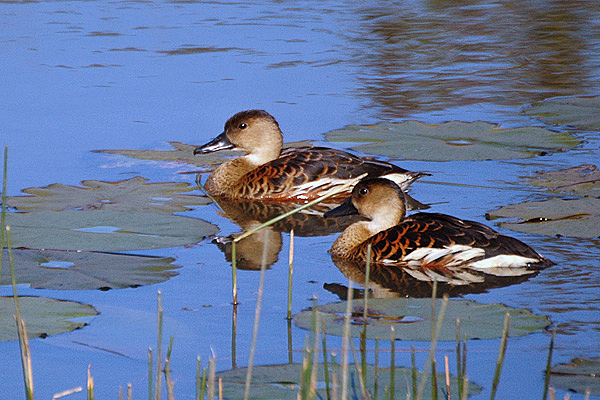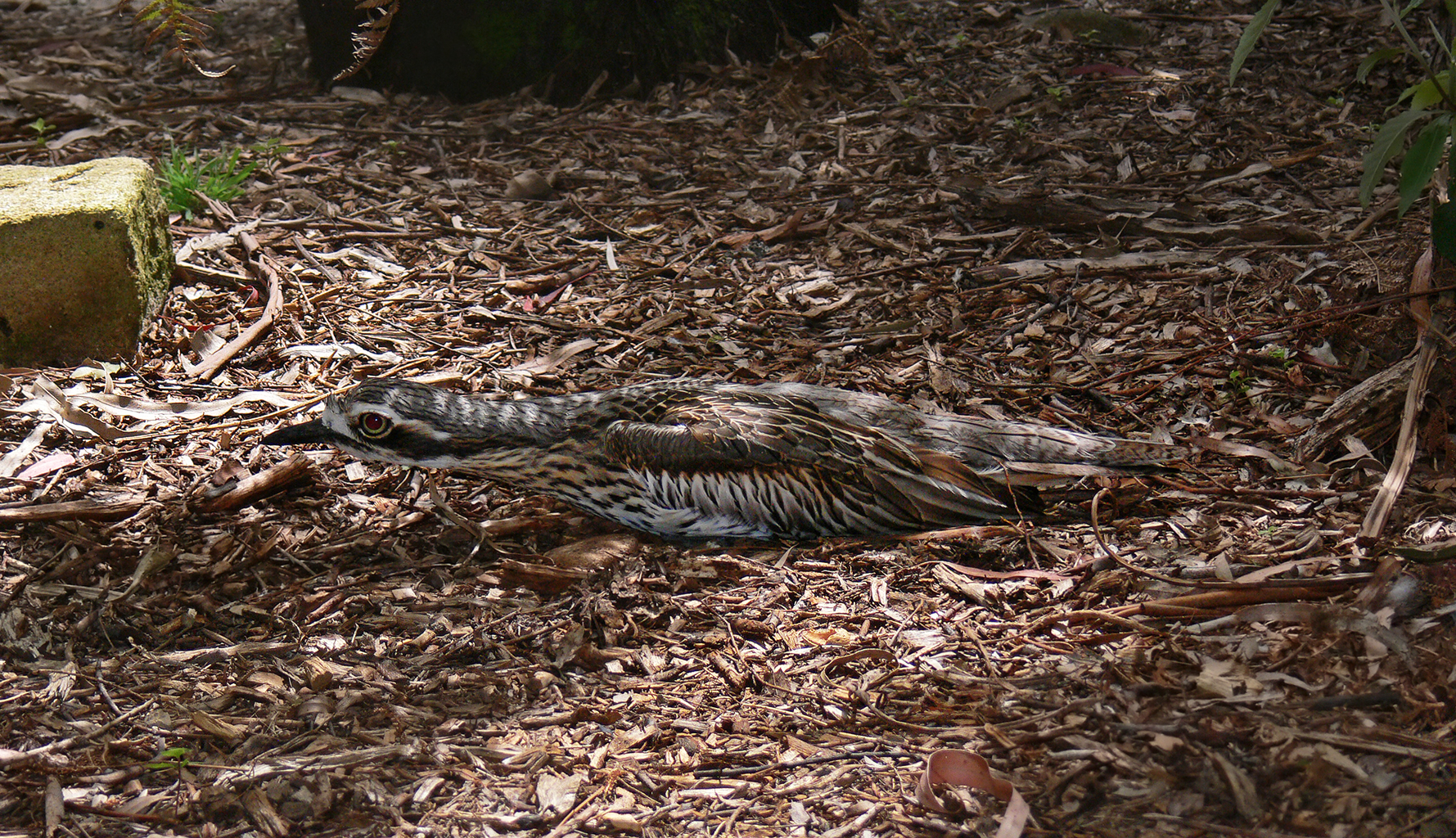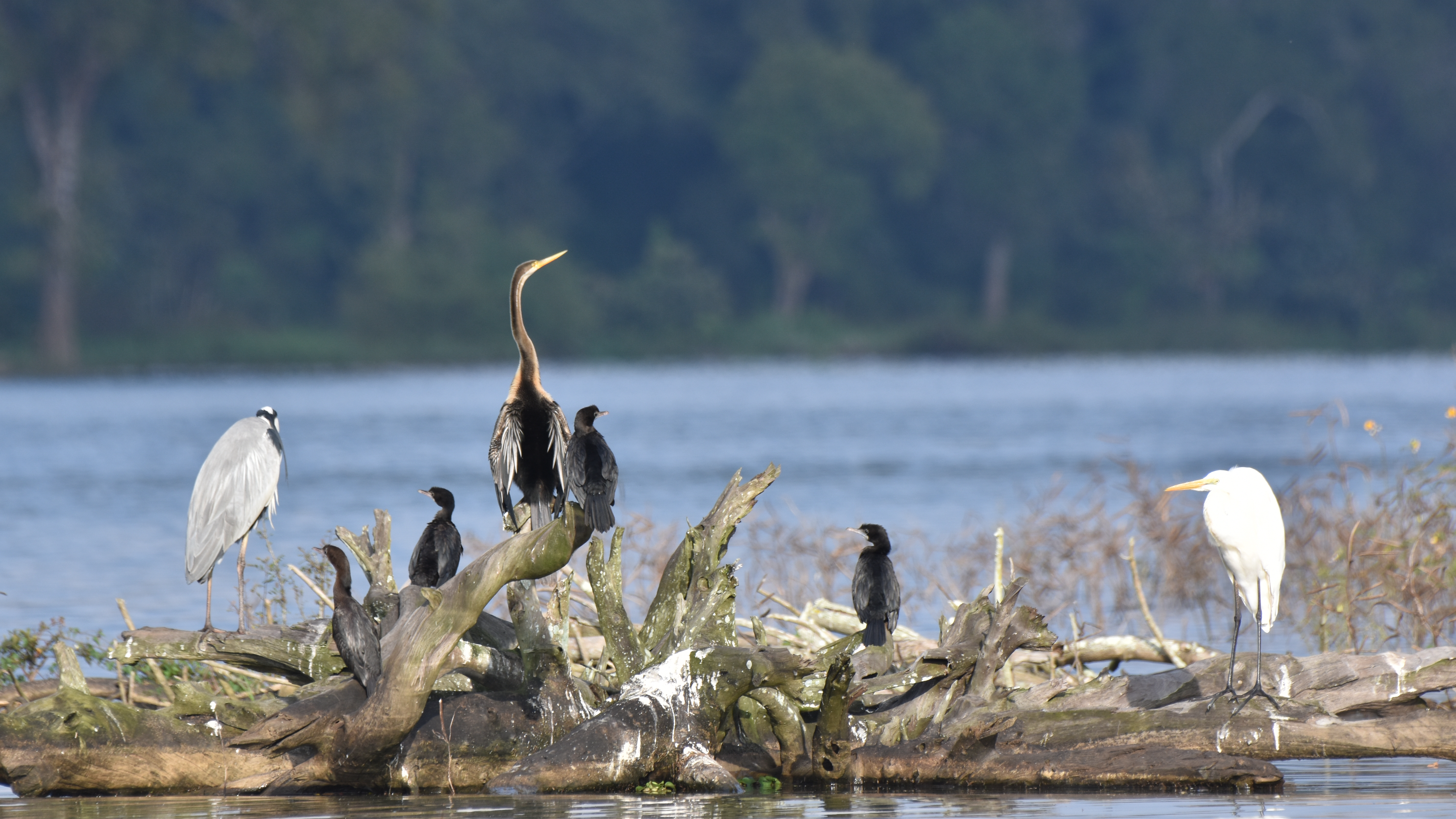|
Anson Bay, Daly And Reynolds River Floodplains
The Anson Bay, Daly and Reynolds River Floodplains comprise some of seasonally inundated floodplains around Anson Bay, and the lower reaches of the Daly, Reynolds and Docherty Rivers entering the bay, on the west coast of the Top End of the Northern Territory of Australia. Anson's Bay lies about south-west of Darwin, on the eastern side of the Joseph Bonaparte Gulf, opening on to the Timor Sea. The site is important for large numbers, and a wide variety, of waterbirds. Birds The floodplains have been identified as an Important Bird Area (IBA) by BirdLife International because they support large numbers of magpie geese, wandering whistling ducks, pied herons and intermediate egrets. The adjacent intertidal mudflats of Anson Bay support up to 27,000 waders, or shorebirds, probably including over 1% of the world population of great knots. The site several large waterbird nesting colonies; other birds that breed in relatively large numbers include little black, little pied an ... [...More Info...] [...Related Items...] OR: [Wikipedia] [Google] [Baidu] |
Dendrocygna Arcuata
The wandering whistling duck (''Dendrocygna arcuata'') is a species of whistling duck. They inhabit tropical and subtropical Australia, the Philippines, Borneo, Indonesia, Papua New Guinea, and the Pacific Islands. Taxonomy There are three subspecies associated with this bird, ''D. a. arcuata'' (Indonesian wandering whistling duck), ''D. a. australis'' (Australian wandering whistling duck), and ''D. a. pygmaea'' (New Britain wandering whistling duck). Description Formerly named tree ducks, the wandering whistling duck has its new name because of their loud whistling calls and the whistling noise their wings make during flight. They have long necks and legs and look like a cross between a goose and a duck. They have a strong head and neck with a darker crown and hindneck. The breast contains black spotting and the feathers are mostly dark brown. They range in size from 54–60 cm in height and weigh on average 750 grams. They mainly feed on grasses, waterlilies, water plants ... [...More Info...] [...Related Items...] OR: [Wikipedia] [Google] [Baidu] |
Wader
245px, A flock of Red_knot.html" ;"title="Dunlins and Red knot">Dunlins and Red knots Waders or shorebirds are birds of the order Charadriiformes commonly found wikt:wade#Etymology 1, wading along shorelines and mudflats in order to foraging, forage for food crawling or burrowing in the mud and sand, usually small arthropods such as aquatic insects or crustaceans. The term "wader" is used in Europe, while "shorebird" is used in North America, where "wader" may be used instead to refer to long-legged wading birds such as storks and herons. There are about 210 species of wader, most of which live in wetland or coastal environments. Many species of Arctic and temperate regions are strongly migratory, but tropical birds are often resident, or move only in response to rainfall patterns. Some of the Arctic species, such as the little stint, are amongst the longest distance migrants, spending the non- breeding season in the southern hemisphere. Many of the smaller species found ... [...More Info...] [...Related Items...] OR: [Wikipedia] [Google] [Baidu] |
Varied Lorikeet
The varied lorikeet (''Psitteuteles versicolor''), is a species of parrot in the family Psittacidae that is endemic to the northern coastal regions of Australia. It is the only species in the genus ''Psitteuteles''. Taxonomy The first depiction of the species was included in a seminal folio by Edward Lear, the subject of his illustration has since been lost and it became recognised as the holotype. The image was published as the thirty sixth lithographic plate in September 1831, without a location or description, in his work '' Illustrations of the Family of Psittacidae, or Parrots'' (1830–32) depicting live specimens in English zoological exhibitions and private collections. The name supplied in the caption was ''Trichoglossus versicolor'', with the subheading "Variegated Parrakeet". The source of the specimen, according to Richard Schodde (1997), was incorrectly determined as "Cape York", a location proposed by Gregory Mathews in 1912 and subsequently repeated. Schodde repor ... [...More Info...] [...Related Items...] OR: [Wikipedia] [Google] [Baidu] |
Bush Stone-curlew
The bush stone-curlew or bush thick-knee (''Burhinus grallarius'', obsolete name ''Burhinus magnirostris'') is a large, ground-dwelling bird Endemism, endemic to Australia. Its favoured habitat is open plains and woodlands, where it stalks slowly at night in search of invertebrates such as insects. Its grey-brown coloration is distinguished by dark streaks, its eyes are large and legs are long. It is capable of flight, but relies on the camouflage of its plumage to evade detection during the day; the bush curlew adopts a rigid posture when it becomes aware of an observer. Both sexes care for two eggs laid on the bare ground, usually sited near bush in a shaded position or next to a fallen branch. Taxonomy The bush stone-curlew was first described by English ornithologist John Latham (ornithologist), John Latham in 1801 under the binomial name ''Charadius grallarius''. Latham published three names simultaneously; however, the seniority of ''C. grallarius'' follows the publication o ... [...More Info...] [...Related Items...] OR: [Wikipedia] [Google] [Baidu] |
Nankeen Night Heron
The nankeen night heron (''Nycticorax caledonicus'') is a heron that belongs to the genus '' Nycticorax'' and the family Ardeidae. Due to its distinctive reddish-brown colour, it is also commonly referred to as the rufous night heron. It is primarily nocturnal and is observed in a broad range of habitats, including forests, meadows, shores, reefs, marshes, grasslands, and swamps. The species is in length, with rich cinnamon upperparts and white underparts. The nankeen night heron has a stable population size, and is classified as a species of least concern by the International Union for Conservation of Nature (IUCN). Taxonomy The nankeen night heron was formally described in 1789 by the German naturalist Johann Friedrich Gmelin in his revised and expanded edition of Carl Linnaeus's ''Systema Naturae''. He placed it with herons, cranes and storks in the genus '' Ardea'' and coined the binomial name ''Ardea caledonica''. Gmelin based his description on the "Caledonian night heron ... [...More Info...] [...Related Items...] OR: [Wikipedia] [Google] [Baidu] |
Cattle Egret
The cattle egret (formerly genus ''Bubulcus'') is a cosmopolitan distribution, cosmopolitan clade of heron (family (biology), family Ardeidae) in the genus ''Ardea (genus), Ardea'' found in the tropics, subtropics, and warm-temperate zones. According to the International Ornithologists' Union, IOC bird list, it contains two species, the western cattle egret and the eastern cattle egret, although some authorities regard them as a single species. Despite the similarities in plumage to the egrets of the genus ''Egretta'', it actually belongs to the genus ''Ardea (genus), Ardea''. Originally native to parts of Asia, Africa, and Europe, it has undergone a rapid expansion in its range (biology), distribution and successfully Colonisation (biology), colonised much of the rest of the world in the last century. They are white birds adorned with buff feather, plumes in the breeding season. They nest in bird colony, colonies, usually near bodies of water and often with other wading birds. ... [...More Info...] [...Related Items...] OR: [Wikipedia] [Google] [Baidu] |
Great Egret
The great egret (''Ardea alba''), also known as the common egret, large egret, great white egret, or great white heron, is a large, widely distributed egret. The four subspecies are found in Asia, Africa, the Americas, and southern Europe. Recently, it has also been spreading to more northern areas of Europe. Distributed across most of the Tropics, tropical and warmer temperate regions of the world, it builds tree nests in colonies close to water. Taxonomy The great egret was Species description, formally described in 1758 by the Swedish naturalist Carl Linnaeus in the 10th edition of Systema Naturae, tenth edition of his ''Systema Naturae'' under the binomial nomenclature, binomial name ''Ardea alba''. He specified the type locality (biology), type locality as Europe. The scientific name comes from Latin ''ardea'', "heron", and ''alba'', "white". Like all egrets, it is a member of the heron family (biology), family, Ardeidae. Traditionally classified with the storks in the ... [...More Info...] [...Related Items...] OR: [Wikipedia] [Google] [Baidu] |
Australian Pelican
The Australian pelican (''Pelecanus conspicillatus'') is a large waterbird in the family Pelecanidae, widespread on the inland and coastal waters of Australia and New Guinea, also in Fiji, parts of Indonesia and as a vagrant in New Zealand. It is a predominantly white bird with black wings and a pink bill. It has been recorded as having the longest bill of any living bird. It mainly eats fish, but will also consume birds and scavenge for scraps if the opportunity arises. Taxonomy The Australian pelican was first described by Dutch naturalist Coenraad Jacob Temminck in 1824. Its specific epithet is derived from the Latin verb , meaning 'to behold', and refers to the 'spectacled' appearance created by its conspicuous eye markings. Description The Australian pelican is medium-sized by pelican standards, with a wingspan of . Weight can range from , although most of these pelicans weigh between .''CRC Handbook of Avian Body Masses'' by John B. Dunning Jr. (Editor). CRC Press (1 ... [...More Info...] [...Related Items...] OR: [Wikipedia] [Google] [Baidu] |
Royal Spoonbill
The royal spoonbill (''Platalea regia''), also known as the black-billed spoonbill, occurs in intertidal flats and shallows of fresh and saltwater wetlands in Australia, New Zealand, Indonesia, Papua New Guinea, and the Solomon Islands. (In New Zealand, it is also known by the Māori name .) It has also been recorded as a vagrant in New Caledonia. The royal spoonbill lives in wetlands and feeds on crustaceans, fish and small insects by sweeping its bill from side to side. It always flies with its head extended. Widespread throughout its large range, the royal spoonbill is evaluated as Least Concern on the IUCN Red List of Threatened Species. Taxonomy The renowned ornithologist John Gould first described the royal spoonbill in 1838, naming it ''Platalea regia'' and noting its similarity to the Eurasian spoonbill (''P. leucorodia''). A 2010 study of mitochondrial DNA of the spoonbills by Chesser and colleagues found that the royal and black-faced spoonbills were each other's close ... [...More Info...] [...Related Items...] OR: [Wikipedia] [Google] [Baidu] |
Australian White Ibis
The Australian white ibis (''Threskiornis molucca'') is a wading bird of the family (biology), family Threskiornithidae. It is widespread across much of Australia. It has a predominantly white plumage with a bare, black head, long downcurved bill, and black legs. While it is closely related to the African sacred ibis, the Australian white ibis is a Birds of Australia, native Australian bird. Contrary to Urban legend, urban myth, it is not a Introduced species, feral species introduced to Australia by people, and it does not come from Egypt. Historically rare in urban areas, the Australian white ibis has established in urban areas of the east coast in increasing numbers since the late 1970s; it is now commonly seen in Wollongong, Sydney, Melbourne, Adelaide, Darwin, Northern Territory, Darwin, the Gold Coast, Queensland, Gold Coast, Brisbane and Townsville. In recent years, the bird has also become increasingly common in Perth, Western Australia, and surrounding towns in south-w ... [...More Info...] [...Related Items...] OR: [Wikipedia] [Google] [Baidu] |
Darter
The darters, anhingas, or snakebirds are mainly tropical waterbirds in the family Anhingidae, which contains a single genus, ''Anhinga''. There are four living species, three of which are very common and widespread while the fourth is rarer and classified as near-threatened by the IUCN. The term ''snakebird'' is usually used without any additions to signify whichever of the completely allopatric species occurs in any one region. It refers to their long thin neck, which has a snake-like appearance when they swim with their bodies submerged, or when mated pairs twist it during their bonding displays. "Darter" is used with a geographical term when referring to particular species. It alludes to their manner of procuring food, as they impale fishes with their thin, pointed beak. The American darter (''A. anhinga'') is more commonly known as the anhinga. It is sometimes called "water turkey" in the southern United States; though the anhinga is quite unrelated to the wild turkey, they ar ... [...More Info...] [...Related Items...] OR: [Wikipedia] [Google] [Baidu] |
Pied Cormorant
The Australian pied cormorant (''Phalacrocorax varius''), also known as the pied cormorant, pied shag, or great pied cormorant, is a medium-sized member of the cormorant family. It is found around the coasts of Australasia. In New Zealand, it is usually known either as the pied shag or by its Māori name of . Older sources may refer to it as the "yellow-faced cormorant". Taxonomy The Australian pied cormorant was formally described in 1789 by the German naturalist Johann Friedrich Gmelin in his revised and expanded edition of Carl Linnaeus's ''Systema Naturae''. He placed it in the genus '' Pelecanus'' and coined the binomial name ''Pelecanus varius''. Gmelin based his description on the "pied shag" from Queen Charlotte Sound, New Zealand, that had been described in 1785 by English ornithologist John Latham in his book ''A General Synopsis of Birds''. Latham had based his own description on a specimen in the Leverian Museum and on a watercolour by Georg Forster that belonge ... [...More Info...] [...Related Items...] OR: [Wikipedia] [Google] [Baidu] |






